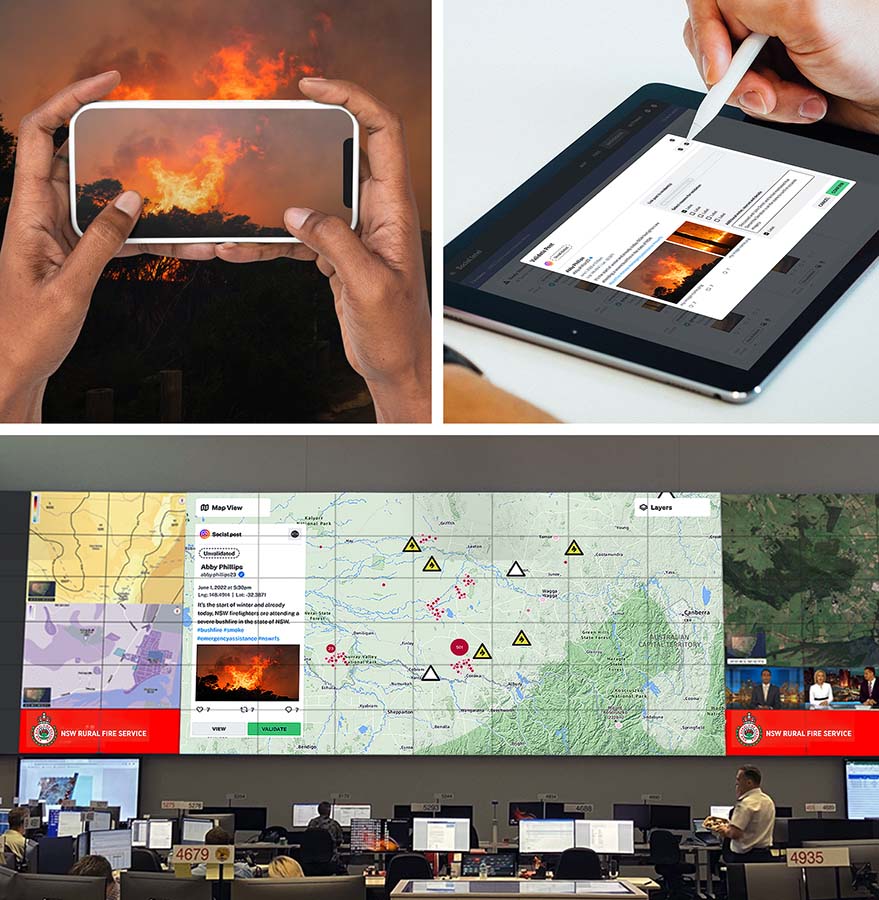Sifting through vast amounts of social media data is time-consuming, labour intensive and costly. On top of this, there are over 250 siloed systems used in various fire fighting activities today, therefore introducing another digital solution potentially adds additional complexity.
Designing a workflow for finding social media related to specific fires required considering many touch points, user groups and jobs to be done. Our team embedded themselves onsite with the customer, observing pain points, opportunities and unconscious habits which all contributed to the solution design.
Using a Human Centred Design approach allowed us to contextualise the needs of all roles within a fire agency and illustrate the end-to-end experience; highlighting the people, processes, tools and physical space required to identify and use public information.
We conducted user interviews and contextual enquiries to understand the current service; prototyping a new process that simulates real-life emergency use cases. We worked in timeboxed design sprints, leaning on co-creation workshops with SMEs to truly understand if the value of the service was well defined, challenges were met, and business needs balanced.
We worked in timeboxed design sprints, leaning on co-creation workshops with SMEs to truly understand if the value of the service was well defined, challenges were met, and business needs balanced. We leveraged our existing design system to deliver a solution that is both simple and effective. Identifying four features addressing key opportunity areas;
- A social media feed that can scale to add infinite crowd-sourced information platforms.
- A tailored dashboard allowing users to customise their view, focus on their area of operation, and prioritise workloads.
- A settings page allowing agencies to continuously update the Machine Learning ingestion rules; continuously responding to up-and-coming social media trends.
- Implementation of technologies like Machine Learning for object recognition, topic classification, and location pattern detection.









